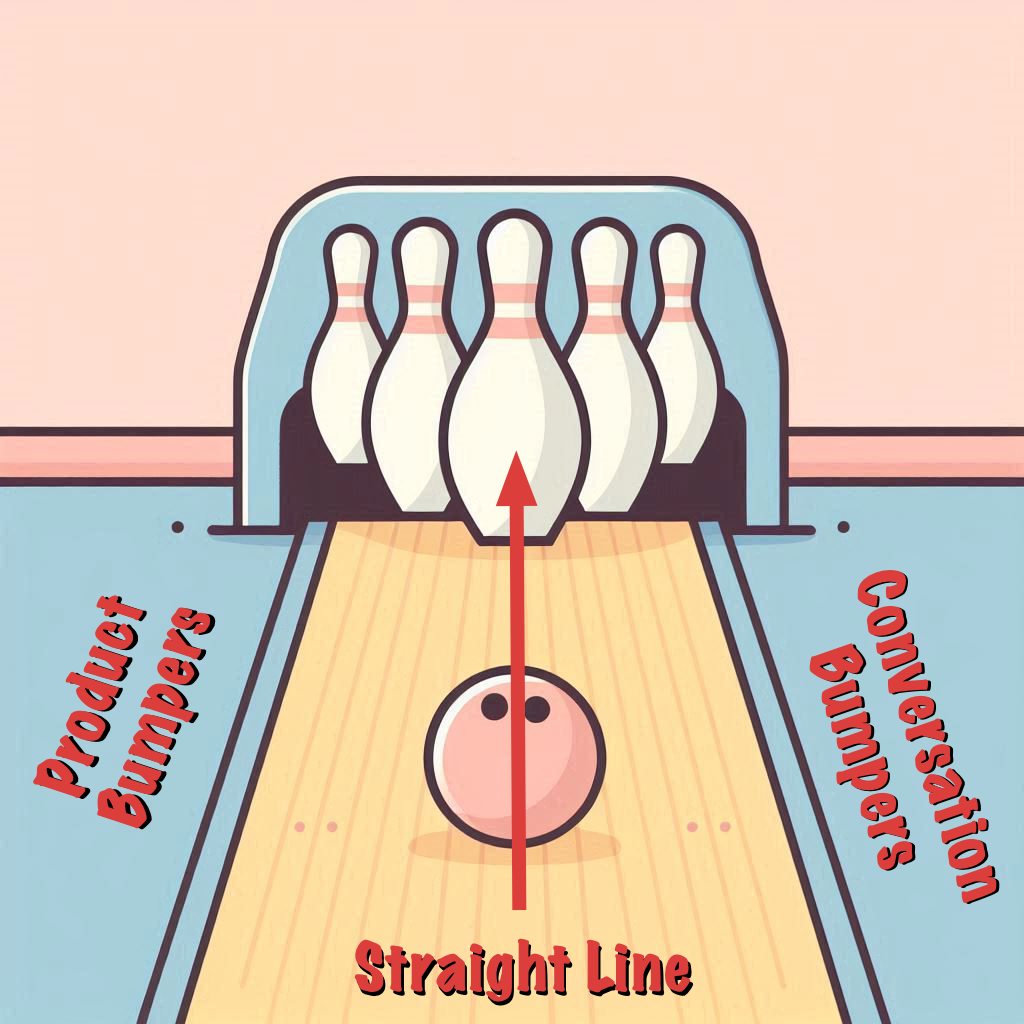Bowling Alley Framework
The Bowling Alley Framework (also called Straight-Line Onboarding) is a user journey optimization technique from Product Led Growth, helping to reduce the “time to value” and increase conversion and retention during the initial user interactions with a product.

The Bowling Alley Framework uses the metaphor of a bowling alley for the initial user journey, with the bowling lane representing a direct path for a user to achieve meaningful value, and bumpers on the side keeping the user on the right path. It consists of three key elements:
- a “Straight Line” of onboarding steps that users follow towards an initial meaningful experience
- “Product Bumpers” that keep users on the right path from within the product
- “Conversational Bumpers” that keep users on the right path outside the product
The Bowling Alley Framework comes from the Product-Led model by Wes Bush, and is most recently described in his book The Product-Led Playbook.
Straight line
Bush suggests that users should experience a “meaningful win” in less than seven minutes when initially interacting with a product, and claims that up to 50% of typical “onboarding steps are rubbish”, suggesting that many of those steps do not need to be taken at all, or can be taken later. As a result, online products lose between 40% to 60% of their users during initial interactions (effectively, those users get stuck in the Suck Zone and stop trying to use the product).
To create a straight line, Bush suggests that product managers should review each individual step a user takes towards the first valuable experience, from larger interactions that include signing up, to miniscule interactions such as clicking on a confirmation button, and label each step into one of three categories:
- “Green” steps are necessary to achieve the initial value, and cannot be removed or delayed
- “Yellow” steps are necessary but they can be delayed or skipped initially (typically something that can be set with sensible defaults)
- “Red” steps are not necessary for the initial experience, and can be removed completely from onboarding.
The onboarding process should then be changed to include only the essential green steps, with yellow steps potentially done after the initial value, and red steps done much later, when appropriate to enhance the user experience.
If different types of users would need to take different paths to value, Bush suggests adding “profiling questions” to help select the remaining steps. Keep in mind that this should be limited to just the information you need to know to select the rest of the path, not to collect user profile information that might be needed later. For example, Narakeet allows users to create video or audio files, requiring different onboarding. When users click on “get started”, they immediately see a profiling question “What would you like to create?”, offering the option for audio or video files. No other registration or user profile questions appear in the initial path to value.
Even with a direct line to value, some users might get lost on the way. For that, the product needs two types of “bumpers” to return users back to the intended path.
Product bumpers
Product bumpers are features inside the product that keep users focused on the straight line, and help them complete the initial journey. Some common examples of product bumpers are features such as:
- product tours
- progress bars
- checklists
- on-boarding tooltips
- action prompts for empty states, helping users take an action that leads to experiencing a meaningful value
Conversational bumpers
Conversational bumpers work outside the product. They “educate users, meet users where they are and pull back into the product”, assisting users in a way that the product itself cannot do. Some common examples of conversational bumpers are:
- automated emails
- in-app messaging
- community forums
- knowledge bases
- training
- specialist assistance
The Prospect Awareness Scale and similar tools can be very helpful to design and tailor conversational bumpers and adjust the onboarding process to the needs of various types of users.
Benefits of using the Bowling Alley Framework
Bush suggest that by going through the Bowling Alley Framework, companies typically remove 30-40% of the steps, delay another 20% of the steps, and help users experience core value two to three times faster.
Learn more about the Bowling Alley Framework
- The Product-Led Playbook: How to Unlock Self-Serve Revenue and Dominate Your Market, ISBN 978-1777119362, by Wes Bush (2024)